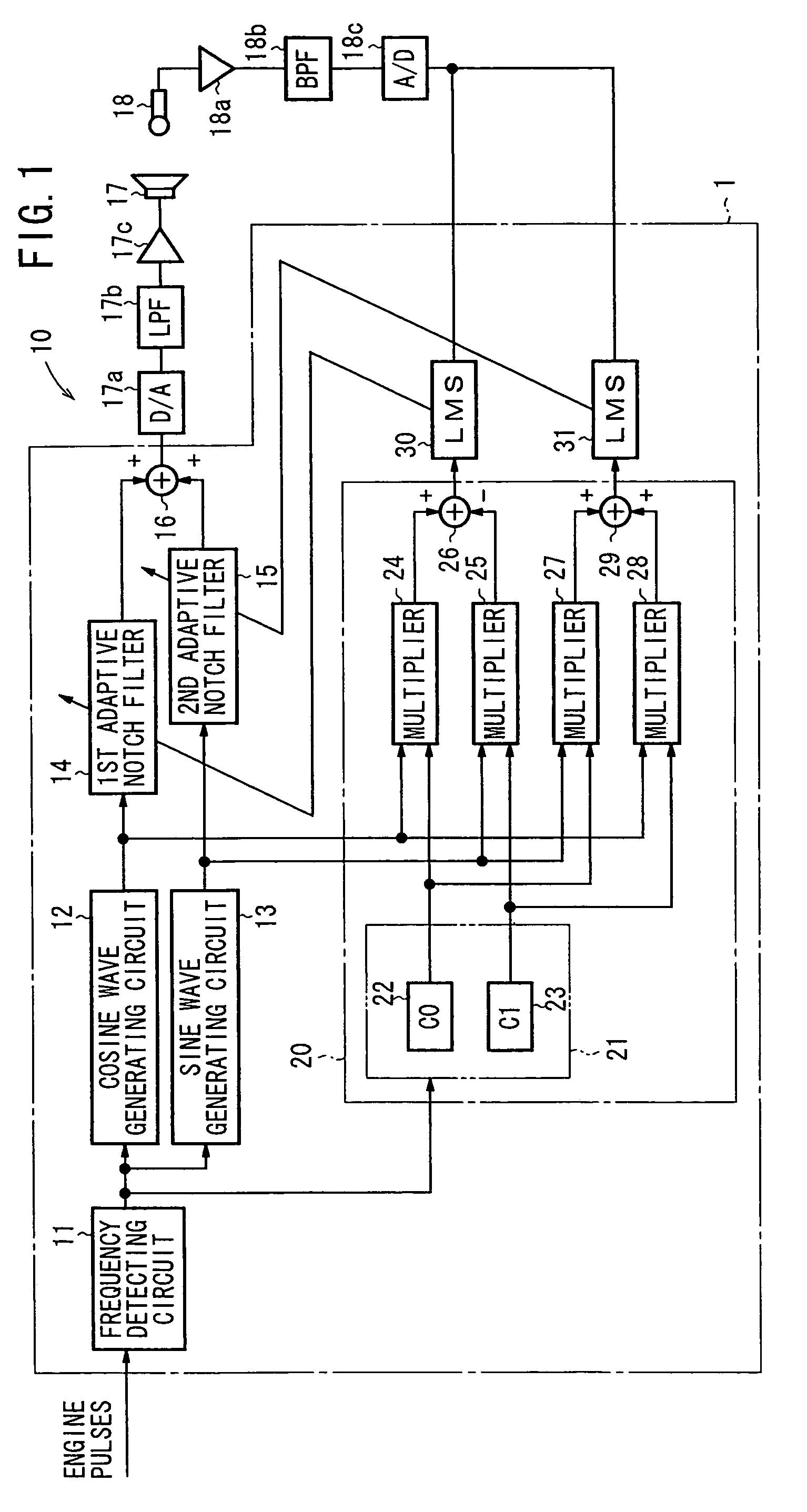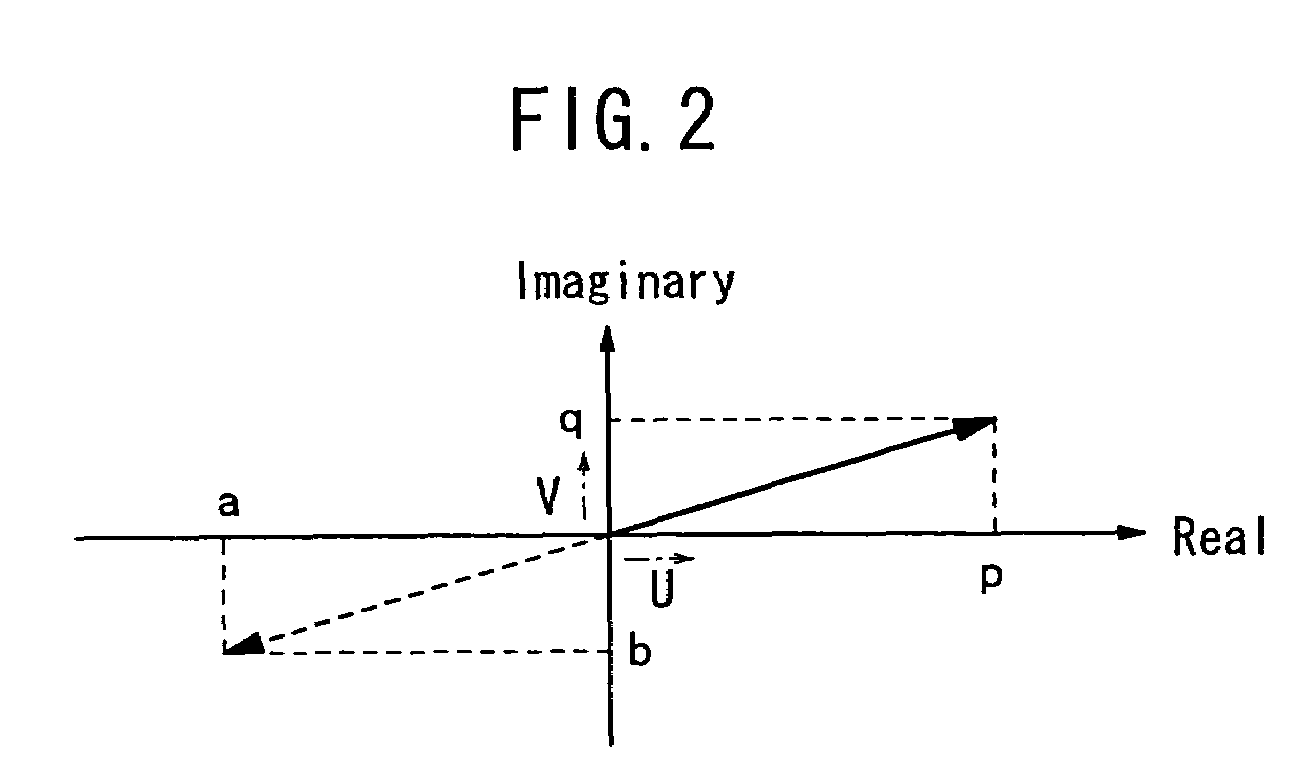Apparatus for and method of actively controlling vibratory noise, and vehicle with active vibratory noise control apparatus
a technology of vibratory noise and vibratory noise, which is applied in the direction of electrical transducers, instruments, transportation and packaging, etc., can solve the problems of large processing load on the fir filter, frequency the number of taps of the fir filter also needs to be increased, so as to achieve sufficient vibratory noise control capability and reduce the amount of calculations
- Summary
- Abstract
- Description
- Claims
- Application Information
AI Technical Summary
Benefits of technology
Problems solved by technology
Method used
Image
Examples
Embodiment Construction
[0048]Active vibratory noise control apparatus according to preferred embodiments of the present invention will be described below.
[0049]FIG. 1 shows in block form an active vibratory noise control apparatus according to an embodiment of the present invention.
[0050]The active vibratory noise control apparatus, generally designated by 10 in FIG. 1, is arranged to cancel muffled sounds of the engine on a vehicle, for example, which serve as main vibratory noise in the passenger compartment of the vehicle.
[0051]As shown in FIG. 1, the active vibratory noise control apparatus 10 has primary components which are functionally implemented by a microcomputer 1. The rotational speed of the output shaft of the engine is detected as engine pulses such as top-dead-center pulses by a Hall device. The detected engine pulses are supplied to a frequency detecting circuit 11 of the active vibratory noise control apparatus The frequency detecting circuit 11 detects the frequency of the engine pulses ...
PUM
 Login to View More
Login to View More Abstract
Description
Claims
Application Information
 Login to View More
Login to View More - R&D
- Intellectual Property
- Life Sciences
- Materials
- Tech Scout
- Unparalleled Data Quality
- Higher Quality Content
- 60% Fewer Hallucinations
Browse by: Latest US Patents, China's latest patents, Technical Efficacy Thesaurus, Application Domain, Technology Topic, Popular Technical Reports.
© 2025 PatSnap. All rights reserved.Legal|Privacy policy|Modern Slavery Act Transparency Statement|Sitemap|About US| Contact US: help@patsnap.com



